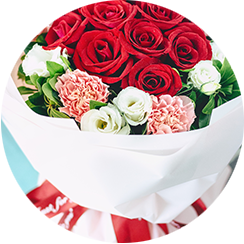Effortless Ways to Extend the Life of Flowers in 3 Steps
Posted on 24/05/2025
Effortless Ways to Extend the Life of Flowers in 3 Steps
There is something magical about fresh flowers -- their vibrant colors, delicate petals, and fragrant aroma can brighten up any room and lift your mood instantly. However, one of the most common frustrations flower lovers face is that cut flowers tend to wilt and fade too quickly. The good news is, with a handful of effortless methods, you can significantly extend the life of flowers and keep your bouquets looking freshly-picked with minimal effort. In this comprehensive guide, we reveal three straightforward, science-backed steps to help your blossoms thrive for longer. Whether you love roses, lilies, daisies, or exotic blooms, these techniques will help you get the most from every stem.
Why Do Cut Flowers Fade Quickly?
Before diving into the practical steps, it helps to understand why flowers wilt once they're cut. When removed from their root source, flowers lose their access to water and nutrients, making them more prone to dehydration, bacteria build-up, and stem blockages. Heat, sunlight, and contaminants can also hasten their decline.
- Water Uptake Issues: Air bubbles or bacteria can clog stems, inhibiting hydration.
- Bacterial Growth: Vase water becomes a breeding ground for microbes that hasten decay.
- Environmental Stressors: Direct sunlight, drafts, and heat accelerate wilting.
By addressing these challenges in simple ways, you can prolong the lifespan of cut flowers and enjoy their beauty far longer.

Three Effortless Steps to Prolong the Freshness of Your Flower Arrangements
Ready to discover how to keep your blooms vibrant for days and even weeks longer? Let's explore the three-step method for increasing flower longevity effortlessly:
Step 1: Prepare Your Flowers & Vase Like a Pro
The foundation of long-lasting flowers starts immediately after purchase. Proper preparation lays the groundwork for maximum water absorption and wilt prevention.
- Choose a Clean Vase: Residue and bacteria lurking in a vase can sabotage your bouquet before it's even arranged. Wash your vase thoroughly with warm, soapy water and rinse with a splash of white vinegar to neutralize lingering microbes.
- Use Fresh, Lukewarm Water: Fill the vase with clean, lukewarm (not hot or cold) water. This temperature encourages quick water uptake without shocking the stems.
- Trim the Stems at an Angle: Immediately upon receiving your flowers, cut 1-2 inches off the stems at a sharp 45-degree angle. This exposes a larger surface area for water absorption and prevents the stem end from resting flat on the vase bottom, which can impede hydration.
- Remove Lower Leaves: Any leaves that would be submerged in water should be plucked off. Decaying foliage can contaminate water and provide a breeding ground for bacteria, drastically shortening flower shelf-life.
These simple, effortless flower care techniques are sometimes overlooked, but they make a world of difference to your blooms' longevity.
Step 2: Keep Bacteria at Bay With the Right Flower Food (Or Natural Alternatives)
Bacterial growth is the silent enemy of every cut flower. Fortunately, you can minimize the risk with just a few easy solutions.
- Use Commercial Flower Food: Most store-bought bouquets include a small sachet of preservative, specially designed to extend the life of floral arrangements. Dissolve the packet in vase water before adding your stems. These contain a perfect blend of nutrients, acidifiers (like citric acid), and biocides to inhibit bacteria.
-
DIY Flower Food Alternatives: If you don't have commercial preservatives, you can create an effective home solution:
- Mix 2 teaspoons of sugar, 2 teaspoons of lemon juice, and a few drops of bleach per quart of water. Sugar feeds your flowers, lemon maintains the right pH, and bleach suppresses microbial growth.
- For an even easier fix, a small splash of clear soda (like 7-Up) works as both a food and acidifier!
- Change the Water Regularly: To keep flowers fresh for longer, replace the water every 2-3 days. Each time, rinse the vase, add fresh solution, and trim stems again for optimal hydration.
These steps create a fresh, bacteria-free environment that helps your flowers thrive instead of wilt.
Step 3: Choose the Ideal Location and Simple Daily Upkeep
Where you display your flowers--and your daily maintenance--have a dramatic impact on how long they last. Small tweaks in your environment can mean the difference between blooms that fade after a couple days and those lasting a week or more.
- Keep Arrangements Out of Direct Sunlight & Heat: Place vases in cool zones, away from windows, radiators, or appliances. Heat speeds up wilting; indirect light is best for longevity.
- Avoid Drafts or Fruits: Surprisingly, ripening fruits emit ethylene gas, which causes flowers to age prematurely. Likewise, keep arrangements away from strong air currents.
- Remove Fading Petals Promptly: As petals start to wilt, pinch them off with clean hands or scissors. This prevents the spread of decay and keeps bouquets looking fresh.
- Mist Delicate Petals Daily: For especially thirsty flowers (like hydrangeas), lightly spritzing petals with fresh water helps maintain turgidity and vibrancy.
By combining basic daily upkeep with a mindful display area, you'll maximize your bouquet's visual appeal and lifespan.
Bonus Tips: Special Care for Unique Flowers
Some blooms require special care to make flowers last longer:
- Woody Stems (e.g., Roses, Lilacs): Carefully split the stem bottom or smash gently with a hammer for greater water intake.
- Milky Sap Flowers (e.g., Poppies, Euphorbia): Briefly dip stem ends in boiling water or a flame to seal and prevent sap leakage.
- Bulb Flowers (e.g., Tulips, Daffodils): Don't mix daffodils with other blooms, as their sap is toxic to companions. Let them "rest" in water alone for a few hours before adding to arrangements.
Expert Recommended Tools:
- Sharp floral shears or scissors -- avoids crushing stems.
- A lightweight spray bottle for misting petals.
- Fresh, clean water and a dedicated flower food supply.
Common Flower Care Mistakes to Avoid
Even seasoned flower enthusiasts can make mistakes that sabotage blooms. Here's what to avoid when caring for cut flowers:
- Forgetting to change the vase water regularly, leading to murky, bacteria-ridden environments.
- Using dull blades or crushing stems instead of making clean, angled cuts.
- Placing flowers in direct sun or hot environments, causing rapid dehydration.
- Allowing leaves or debris below the waterline, which accelerates decay.
- Mixing incompatible flowers, like putting daffodils with other sensitive blooms.
How Long Should Cut Flowers Last?
With proper care, most fresh flower arrangements will last between 5 and 14 days, depending on the variety, quality, and environmental conditions. By following these effortless flower preservation tips, you'll get the absolute most out of every stem. Here are averages for popular flowers:
- Roses: 7-10 days
- Lilies: 10-14 days
- Daisies (Gerbera): 7-14 days
- Tulips: 5-7 days
- Orchids: 10-21 days

Frequently Asked Questions About Making Flowers Last Longer
What is the best way to extend the life of flowers in a vase?
The three-step approach described above is scientifically proven and easy to implement: Prepare your flowers and vase, add proper flower food (or homemade alternatives), and maintain ideal display conditions with regular care.
Does aspirin or vinegar help flowers last longer?
Aspirin can slightly lower pH which inhibits bacteria, but the effect is less reliable than commercial flower food. Vinegar is good in small amounts (to acidify water), but too much is harmful. A balanced homemade solution with sugar, lemon juice, and a hint of bleach works best.
Should I refrigerate my flower arrangement overnight?
If you want to maximize vase life, placing flowers in the refrigerator at night can slow deterioration -- just avoid the coldest setting and keep arrangements away from fruits (due to ethylene gas).
Conclusion: Enjoy Your Blooms for Longer With Simple Steps
With just a few simple habits and effortless techniques, anyone can prolong the freshness of flowers dramatically. Clean vases and stems, regular feeding and water changes, and a mindful location all work in harmony to keep your home bouquets looking spectacular for days to come.
- Step 1: Prep your flowers and vase like a florist.
- Step 2: Add the right food and keep water pure.
- Step 3: Display in the correct spot and keep up quick daily care.
For those who cherish the beauty of blossoms, these effortless steps to extend the life of flowers are the secret to longer-lasting joy and color in your space. Why let your bouquet wilt before its time? Begin using these proven, straightforward techniques and enjoy your flowers at their freshest -- every day.







